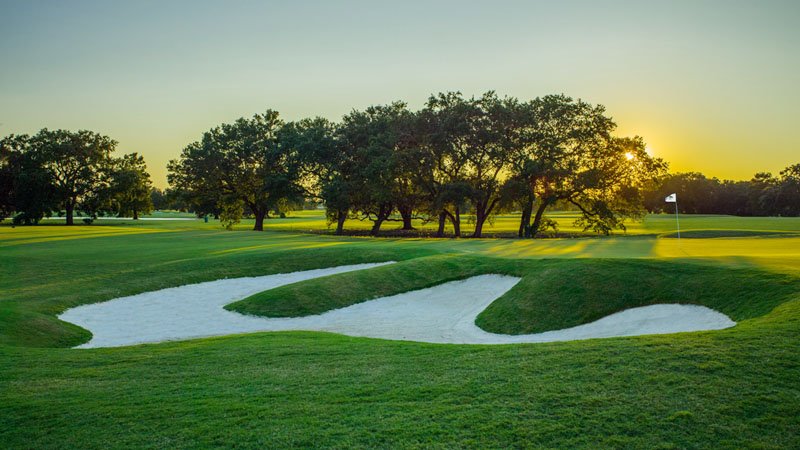
As America's most European city, New Orleans has a past that is checkered, tragic and colorful. It also is a city that has known a great deal of hardship. For three centuries, the city has endured fires, wars, voodoo princesses and hurricanes, but no matter the challenge, New Orleans and its people always manage to come back.
For all of its glorious and spectacular past, New Orleans is not now, nor has it ever been known as a golf destination. It is not uttered in the same breath with places like Pebble Beach, Bandon Dunes, Kohler or the entire state of Florida.
What New Orleans has that other places do not is a golf operation that is helping fuel urban renewal in an area that was in need of help before Hurricane Katrina arrived here 15 years ago and was downright desperate after she left. And the template for that plan came from another golf course that has been helping its surrounding neighborhood for the past quarter century.
Other than one week a year when an 80-year-old PGA Tour event comes through town, the New Orleans golf scene does not make many headlines. It was a blip on the radar screen for a millisecond in 2005 when Hurricane Katrina smashed ashore on the Gulf Coast, leaving much of the city under water, including a few of its old, historic golf courses. What has happened since has gone, for the most part, uncovered and is largely unknown. It is entirely likely that the efforts that are taking place there would be far better known were they occurring in New York, North Carolina or Florida. But this is Louisiana, where nothing moves very quickly thanks to the oppressive heat and humidity and where not much seems to matter on a national level unless it's bad news. And with all the bad dominating the headlines nowadays, it's nice to hear about something positive - especially when it involves golf.
Fortunately for the people of New Orleans, a group of the city's movers and shakers don't seem to care too much what people elsewhere think. They're in a position to help the city's most at-risk residents, and that's exactly what they've been doing for more than a decade.
New Orleans has a history that is anything but boring.
A Good Friday fire in 1788, burned much of the original section of New Orleans. Since the city had been ceded to Spain 25 years earlier, much of the architecture in the French Quarter today is - little-known fact - actually of Spanish influence.
Twenty-seven years after the fire, in 1815, Gen. Andrew Jackson and his band of volunteers, that included militia from Tennessee and a band of privateers led by Jean Laffite the pirate, whipped the British along a turn in the Mississippi River in The Battle of New Orleans. That skirmish is widely recognized as the final conflict of the War of 1812.
More recently, New Orleans' history has been forever molded by Hurricane Katrina. In the early morning hours of April 29, 2005, Katrina made landfall in Buras, Louisiana, south of New Orleans near the Mississippi River Delta before laying waste to the Crescent City over the next several hours. Levees protecting the city - much of which is below sea level - from the Mississippi that flows through downtown, were breached in dozens of locations.
Katrina left New Orleans looking like a war zone: residents stranded on rooftops, dead bodies floating in the water, windows blown out of downtown buildings and evacuees fleeing the city by the thousands. By the time floodwaters receded weeks later, the storm was blamed for more than 1,800 deaths in Louisiana and Mississippi.
A year after the hurricane, a group of the city's public and business leaders decided something had to be done to save their city. Together, they formed the Bayou District Foundation to help revitalize the city's Gentilly neighborhood.
East of the city's more famous French Quarter and Uptown neighborhoods, historic Gentilly was hit especially hard by Katrina. Surrounded by water on three sides - it borders Lake Pontchartrain to the north, Bayou St. John on the west and Inner Harbor Navigation Canal on the east - Gentilly was an easy target.
Bringing the area back has been a slow and steady process that continues today.
At the center of that project is the Bayou Oaks at City Park Golf Club. A Rees Jones design that opened in 2017, the golf course was funded through donations from the foundation, FEMA and the State of Louisiana helps put money back into the foundation, which helped construction of 600-plus housing units, an urgent care facility, pre-school and K-8 school, helping turn one of New Orleans' most crime-crippled neighborhoods into one of its safest.
The blueprint for this plan to rebuild the Gentilly area is East Lake Golf Club in Atlanta, where philanthropist Tom Cousins who founded the East Lake Foundation that is the cornerstone of redevelopment efforts in the surrounding neighborhood. Cousins, former owner of the NBA's Atlanta Hawks, even helped civic leaders in New Orleans establish the Bayou Oaks District Foundation.
Pre-Katrina, City Park in New Orleans was home to four golf courses, all of which were devastated by the storm. The original layout, built in 1902, was home to the city's PGA Tour event, now known as the Zurich Classic of New Orleans, from 1936 through 1962 when the tournament moved to Lakewood Country Club and later English Turn Golf and Country (named for the bend in the River where Jackson et al beat the British in 1815) and finally to its current home at the TPC of Louisiana in nearby Avondale.
The new 7,300-yard Jones design was built on the site of City Park's former East and West courses. The original North Course, which was renovated about a decade ago remains, and plans for the site of the former South Course have yet to be decided, but it will be used to further benefit the residents of Gentilly.
After Katrina, City Park golfers scattered. Many left town and those who came back found other places to play. Since completion of the Rees Jones-designed course they've been coming back in true New Orleans fashion.
Profits from the golf course go back into the foundation, which has helped build the Columbia Parc apartment complex, a collection of 685 housing units, the Educare New Orleans early learning center, the KIPP Believe K-8 charter school and the St. Thomas Community Health Center. And there are plans for a 25,000-square-foot grocery store and pharmacy.
The plan has drawn support from throughout the community. New Orleans Saints quarterback Drew Brees contributed $250,000 last year to help build the KIPP school.
Golf courses are open in Louisiana, but the city has been a hot spot for the COVID-19 virus. And once again, Gentilly and eastern Orleans Parish, like many densely populated urban areas, have been hit especially hard. But they'll be back. It's the New Oreans way.



